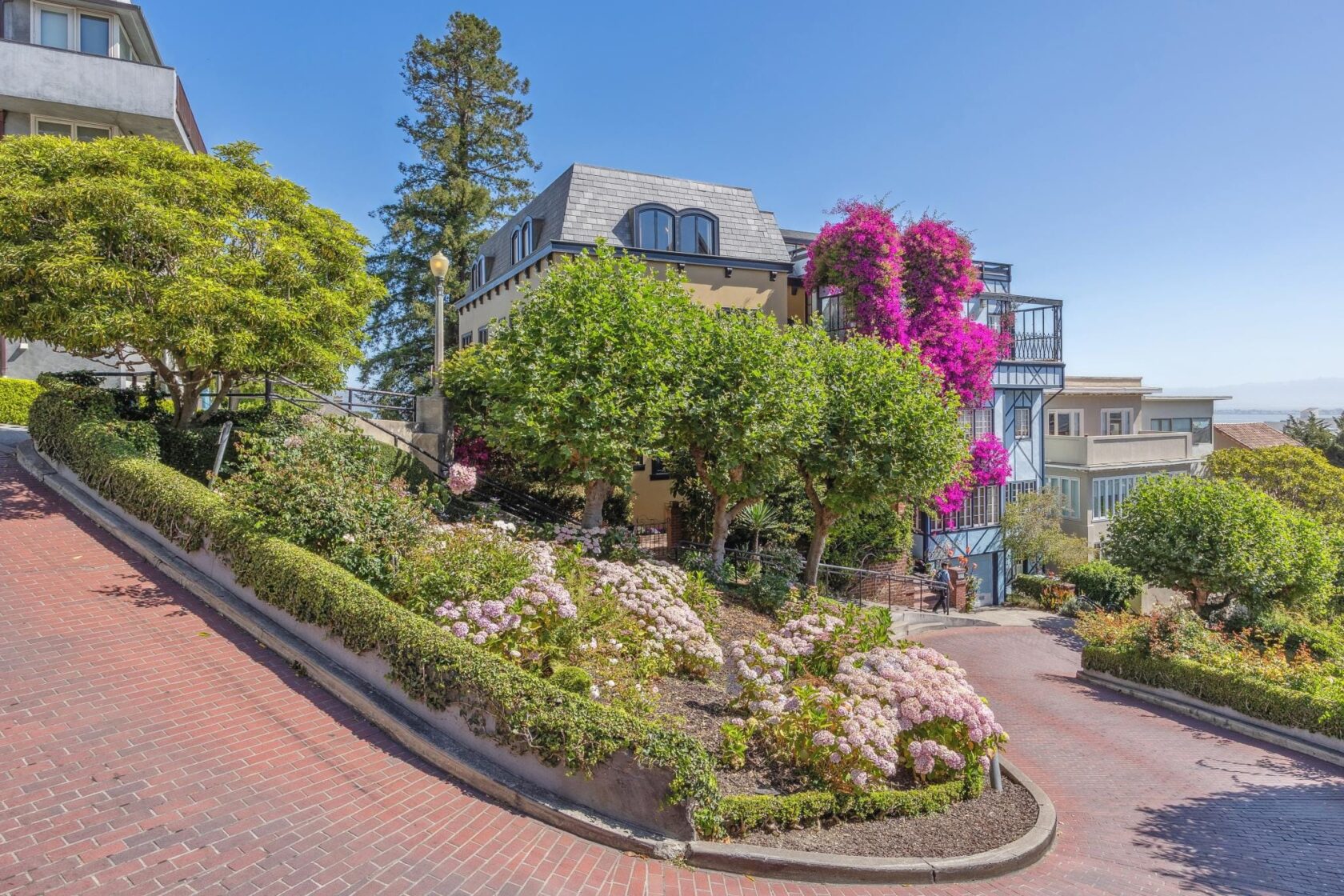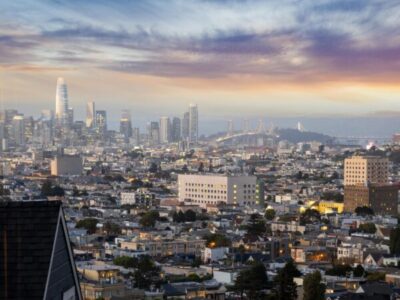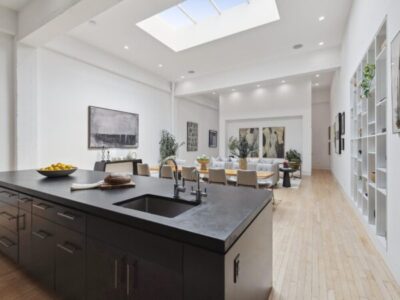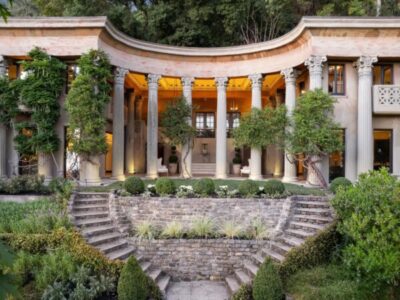What does it cost to live on one of the most iconic streets in the world, the famously steep and crooked Lombard Street?
The answer depends on the home. For example, if you wanted a home with a front-row view of Lombard Street in San Francisco, you could previously buy the multi-unit property at 2-4 Montclair Terrace; the home isn’t technically located on Lombard, but is instead located on a corner lot perpendicular to Lombard.
For over 60 years, the residence was maintained as a single-family residence and is only just now being separated into two units. 2-4 Montclair Terrace, pictured below, was previously on the market for $5.25 million in July 2024. The listing was then canceled several months later.
Doubly famous: House facing Lombard Street also faced legal battle involving towering redwood tree
The crown jewel of 2-4 Montclair Terrace is a beautifully landscaped garden and courtyard, highlighted by a majestic, 90-foot-tall California redwood tree (pictured below).
The redwood has a unique history of its own; it was part of a legal battle in 2017 after neighbors expressed concern that the large branches could potentially break off and harm someone. The owner at the time, maritime architect and arts patron Meri Jaye, had planted the tree in the early 1960s to memorialize her two children and husband who died tragically in a plane accident. She argued that the tree was healthy and did not pose a risk to neighbors.
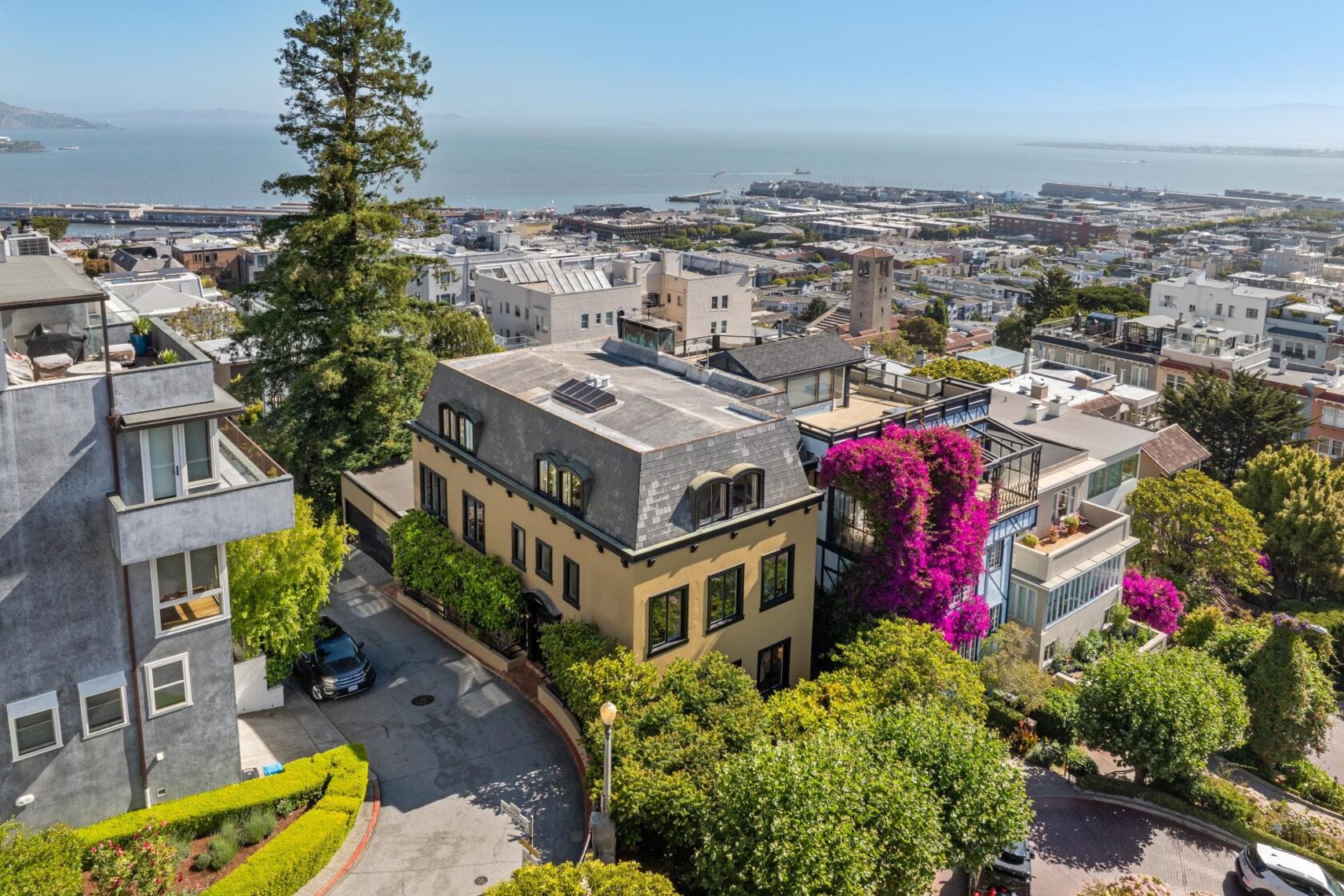
Jaye eventually secured a unanimous vote from the San Francisco Landmark Tree Committee which granted landmark status to the redwood tree, AKA SF Landmark Tree #26. According to the San Francisco Environment Department, “There are serious criminal, civil, and administrative penalties if someone harms a landmark tree or removes a landmark tree without a permit. The criminal penalties include monetary fines and jail time.” Because of this ruling, the massive redwood tree stands tall at 2-4 Montclair Terrace to this day.
You can read more about the home’s rich history here: “Lombard Street Home of Woman Who Fought to Save Redwood She Planted Hits Market For $5.2M.”
How much does it cost to live on a house directly on Lombard Street?
As you might expect, houses on Lombard Street don’t come up for sale often, and we’ve been lucky enough to shoot three residences on the famously-crooked street. While these Lombard houses aren’t currently for sale, we’ll tell you when they were sold, how much they sold for, and what they’re estimated to be worth now.
1028 Lombard Street, San Francisco
- 4 bedrooms, 3.5 bathrooms
- 2,725 square feet
- Built in 1915
- Hardwood floors
- Beamed ceilings
- Leaded windows
- Remodeled chef’s kitchen with center island
1028 Lombard Street in San Francisco sold for $3.5 million in 2022. Its Redfin Estimate shows the house is currently valued at $3,148,770, a decrease of 10% since its 2022 sale.
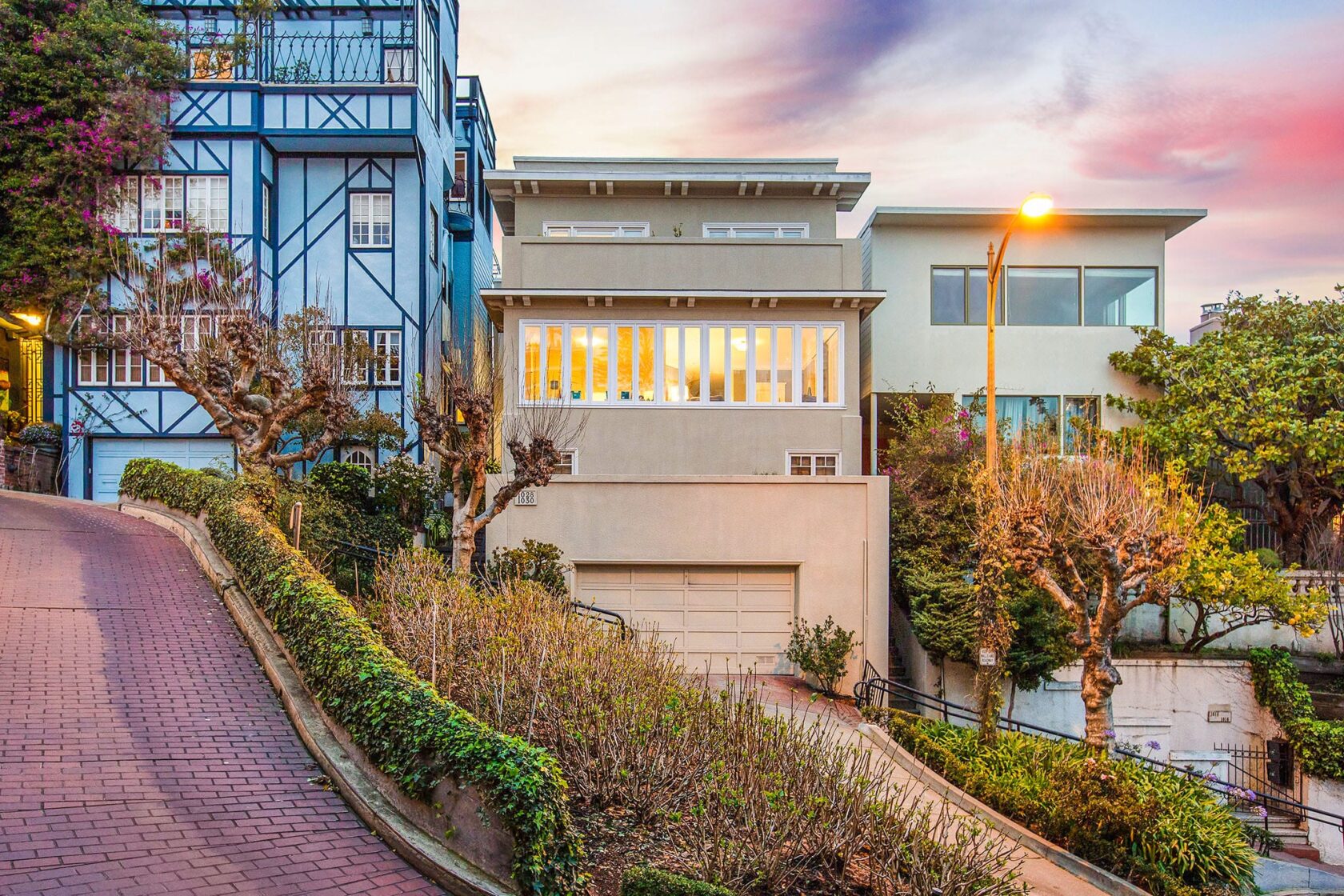
1028 Lombard Street sold for $3.5 million in 2022.
1047 Lombard Street, San Francisco
- 3 bedrooms, 3 bathrooms
- 2,300 square feet
- Built in 1948
- Hardwood floors
- Wood-burning fireplace
1047 Lombard Street in San Francisco sold for $4.2 million in 2021. Its Realtor.com Estimate shows the house is currently valued at $6,906,000, an increase of 64.4% since its 2021 sale.
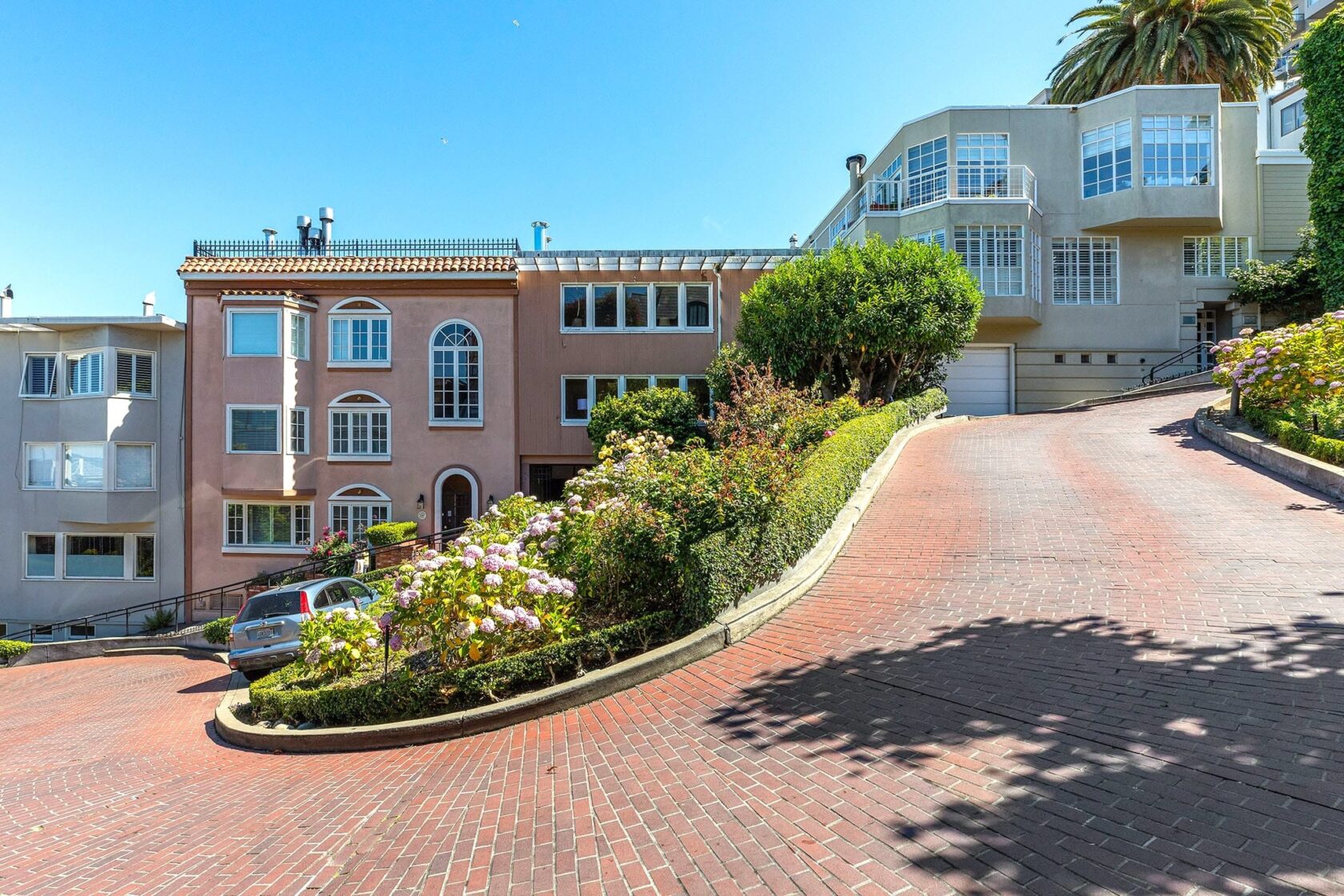
1047 Lombard Street sold for $4.2 million in 2021.
1025 Lombard Street #1
- 2 bedrooms, 2 bathrooms
- 2,300 square feet
- Built in 1951
- Remodeled gas kitchen with stainless appliances
- Hardwood floors
- New roof and shared roof deck with fire pit
1025 Lombard Street #1 in San Francisco sold for $1.7 million in 2019. Its Realtor.com Estimate shows the house is currently valued at $1,577,000 a 7.2% decrease since its 2019 sale.
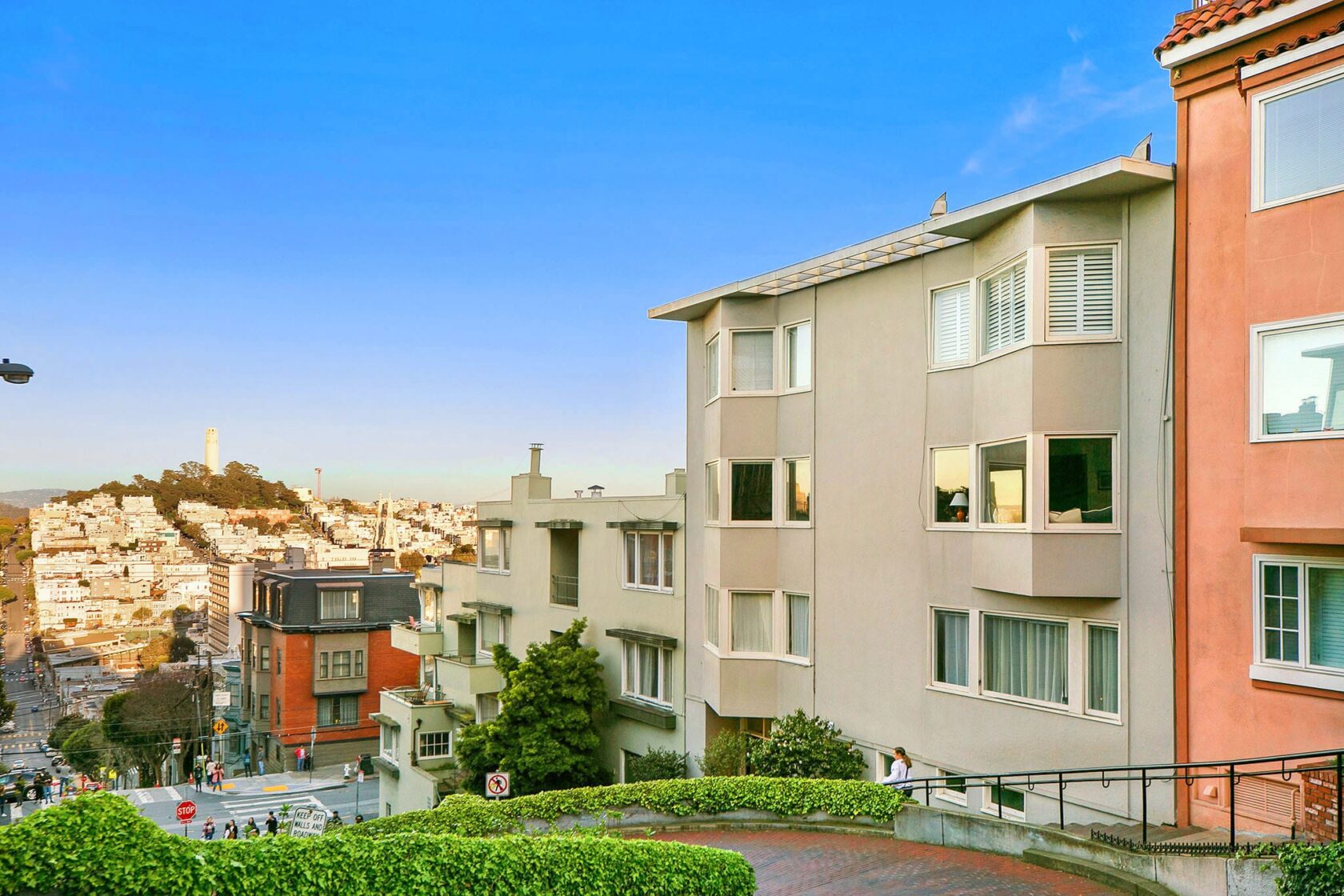
1025 Lombard Street sold for $1.7 million in 2019.
Is it worth the cost to live on Lombard Street in San Francisco?
As you can see from the three houses we photographed, prices and values on Lombard Street vary greatly by property. You also might be wondering why two of the houses saw a notable decrease in potential sales price.
We can only speculate, but part of the reason may be that an estimated two million people visit Lombard’s curves annually, according to San Francisco Jeep Tours. Some residents became so frustrated with the traffic and picture-taking that they proposed a bill to control tourism. The bill would require tourists to reserve a time and pay a fee to visit Lombard Street. Each car would be required to pay $5 on weekdays, and $10 on weekends. Governor Gavin Newsom vetoed the bill in 2019, so residents must continue to put up with living on one of the most-visited attractions in the city.
Tourists: a nuisance for some, a joy for others
Not every resident has a problem with the crowds, however. According to residents interviewers by SF Gate, tourists are only an issue seasonally:
“One resident says, The street isn’t always blocked with lines of cars. And Carol Ann Rogers, president of the Russian Hill Neighbors community organization, said people only tend to congregate during “peak tourist season” – from early spring into late October, when the weather is most pleasant. Three-day weekends bring packed crowds, too.”
Some longtime residents actually enjoy seeing the tourists,
James Ludwig the former director of the San Francisco Ballet and Zoological Society, has lived on Montclair Terrace since 1959 and appreciates the joy the iconic street brings. He says, “‘If you look at the people walking down the street, they all look so happy…We need more of that.'”
So, is it worth the cost to live on Lombard Street in San Francisco?
Again, the answer varies. For some homebuyers, living on one of the most famous and most-visited streets in the world would be a nightmare. For others, living on the curvy street would be a dream come true. The answer, it seems, depends on whether one can accept (and even appreciate) the millions of happy tourists excited to experience “the world’s crookedest street.”
But, FYI…Lombard isn’t actually the most crooked street in the world – or even in San Francisco
The Lombard Street myth of being the most crooked street in the world is pervasive; even The Guinness Book of World Records declared it the world’s most crooked street in 1922.
However, that title actually belongs to Vermont Street (also located in San Francisco). On the Travel Channel show Fact or Fiction, host Jayms Ramirez measured the sinuosity (the amount of curve) of both streets. Ramirez found that Vermont Street is indeed more crooked (with a sinuosity of 1.56) versus Lombard Street (1.2).
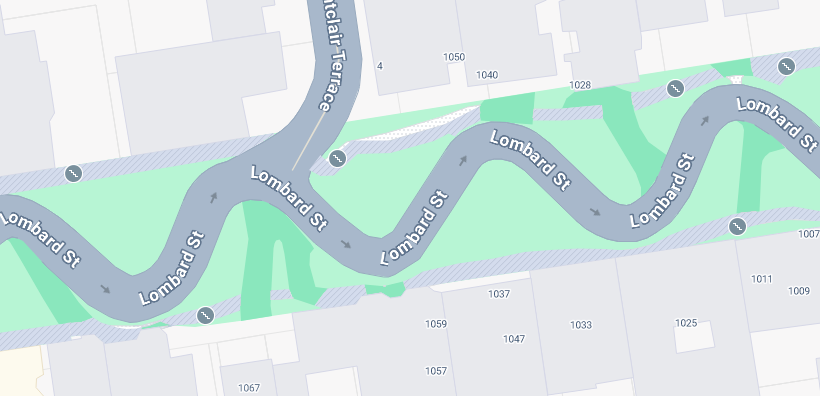
Aerial view of Lombard Street on Google Maps
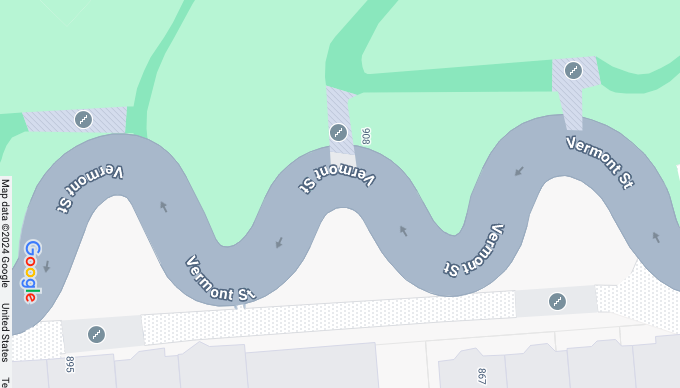
Aerial view of Vermont Street on Google Maps
What else is Vermont Street known for?
In addition to its curvy switchbacks between 20th and 22nd streets, Vermont Street is known for hosting the annual Bring Your Own Big Wheel tricycle competition. BYOBW began in 2000 and, for the first 8 years, took place on Lombard Street. After residents complained due to the growing crowds (is anyone else sensing a trend here?) the race made its new home on Vermont Street in Potrero Hill, and the rest is history.
Would you consider living on Lombard Street?
Let us know in the comments!

